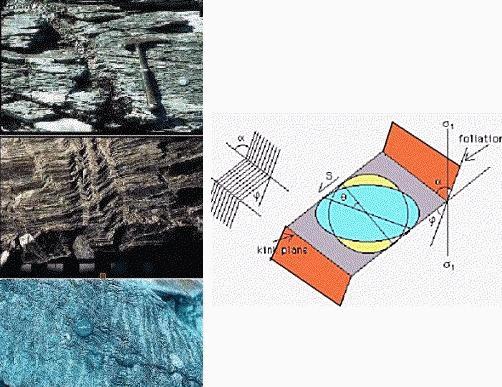
KINK-BANDS, SINGLE If the comprssion applied to laminated anisotropic medium is at an angle generally less than 25 degrees, then the conjugate or box folds developed may have a striking asymmetry with one kinked zone better developed than the other. . If the compressive stress acts parallel to the layering, conjugate kink-bands or box folds are produced but if it acts at an angle to the layering, a single set of kink-bands are developed more or less at the exclusion of the other. Patterson and Weiss (1966) produced conjugate and single kink-bands experimentally and one of their significant conclusions has been that under large shortening, kink-bands are converted into chevron folds. Dewey (1966) made significant contribution towards our understanding of the nature and origin of kink-bards and Arvid Johnson and his coworkers have presented through a series of papers (see 1976 numbers of Tectonophysics) the origin of kink-bands by extensive theoretical treatment of the problem of their origin and geometry. Kink-bands appear to be geometrically correlatable with chevron folds since both are formed by flexural slip. Geometrical analysis of kink-bands seems to suggest that they are formed by consumption of least energy or less work is done in the formation of kink-bands than in case of the formation of chevron folds. The axial plane normally bisects the angle between kinked and unkinked sectors
|